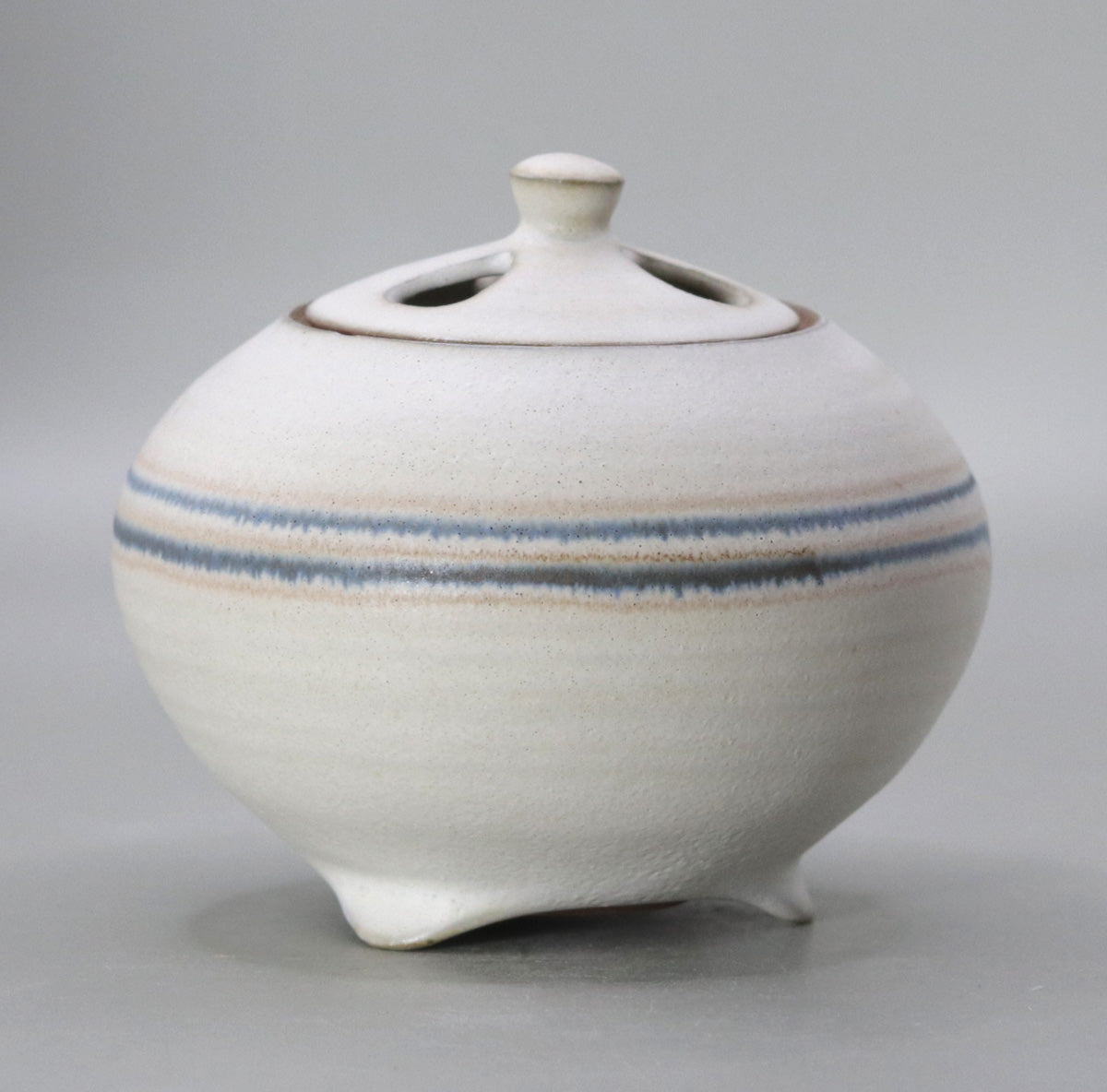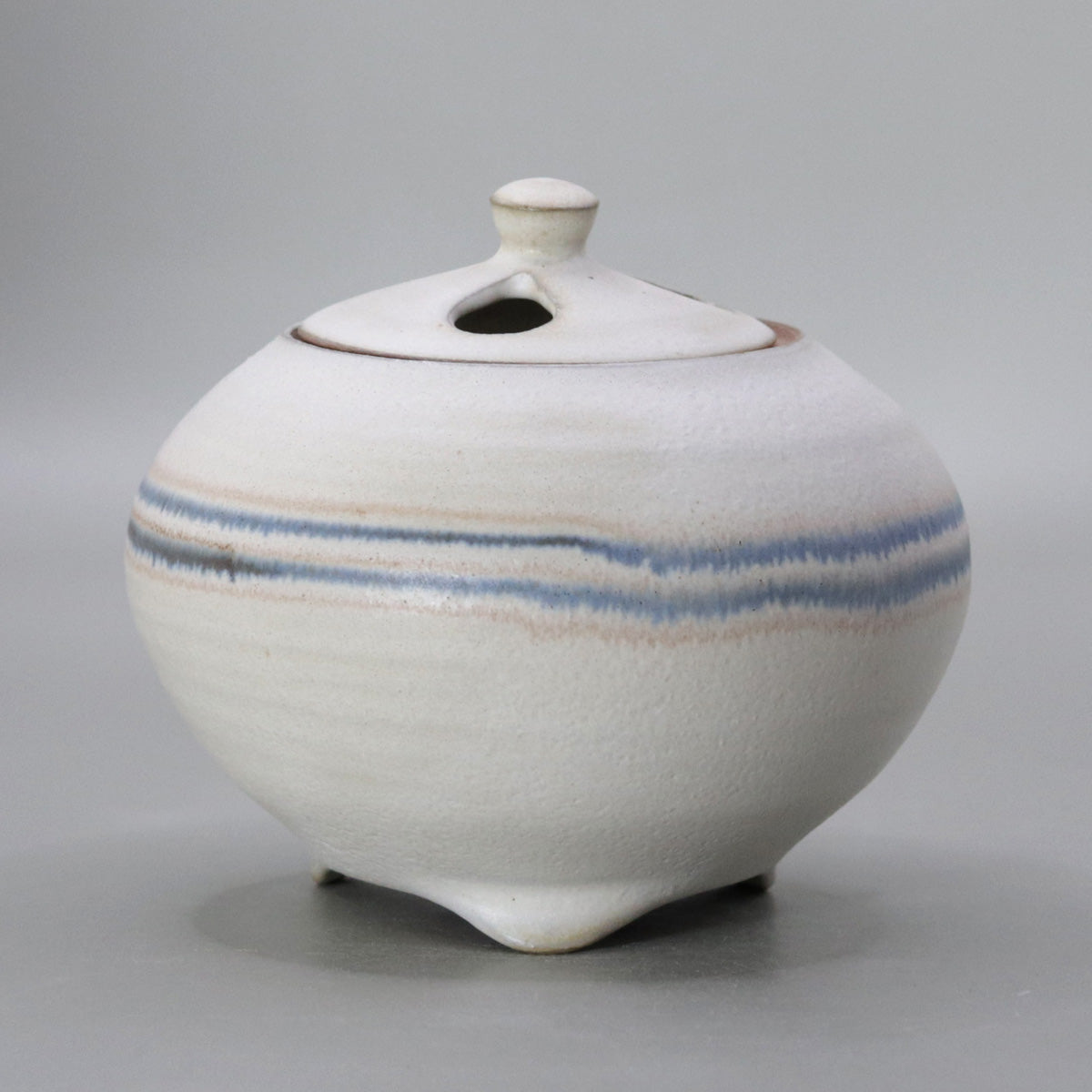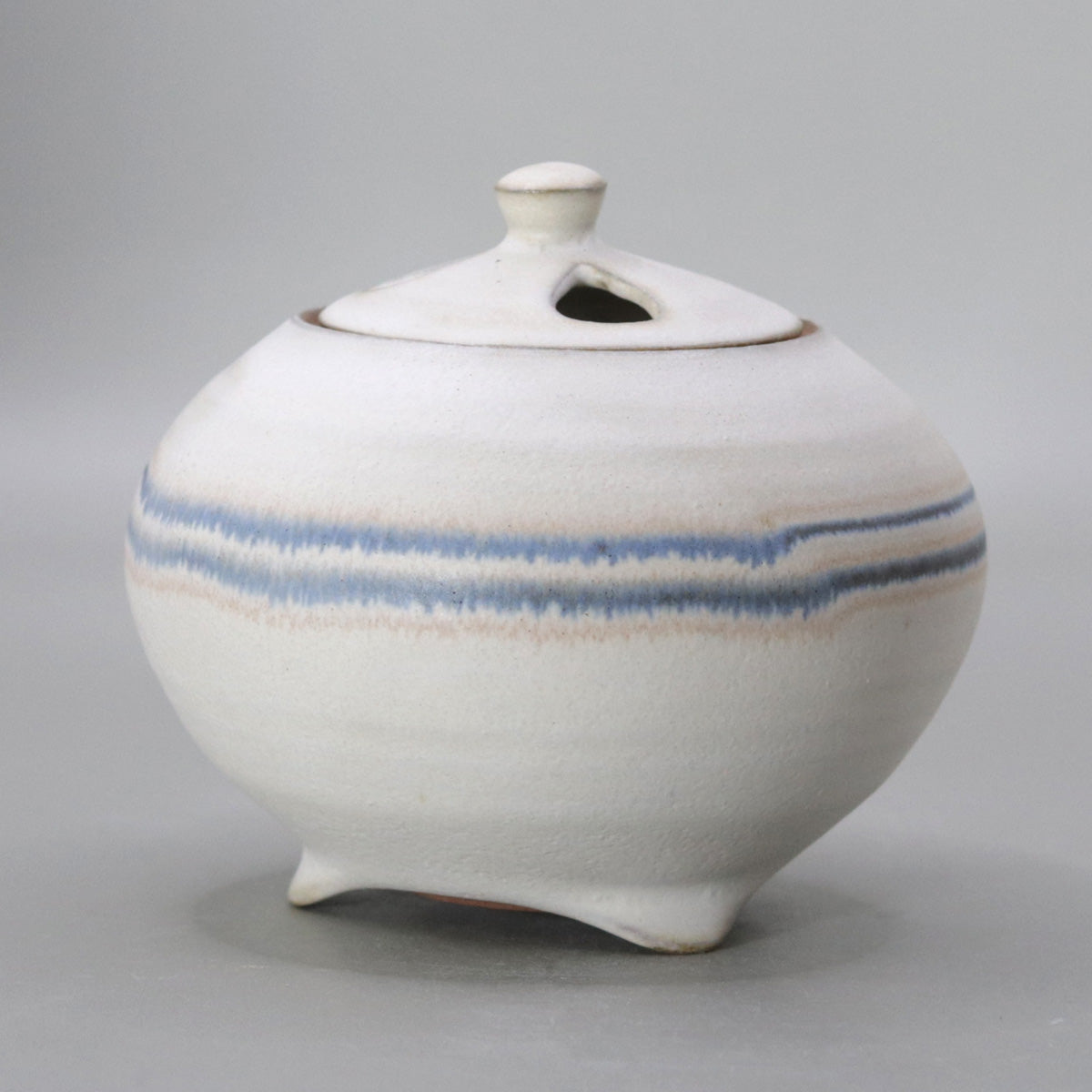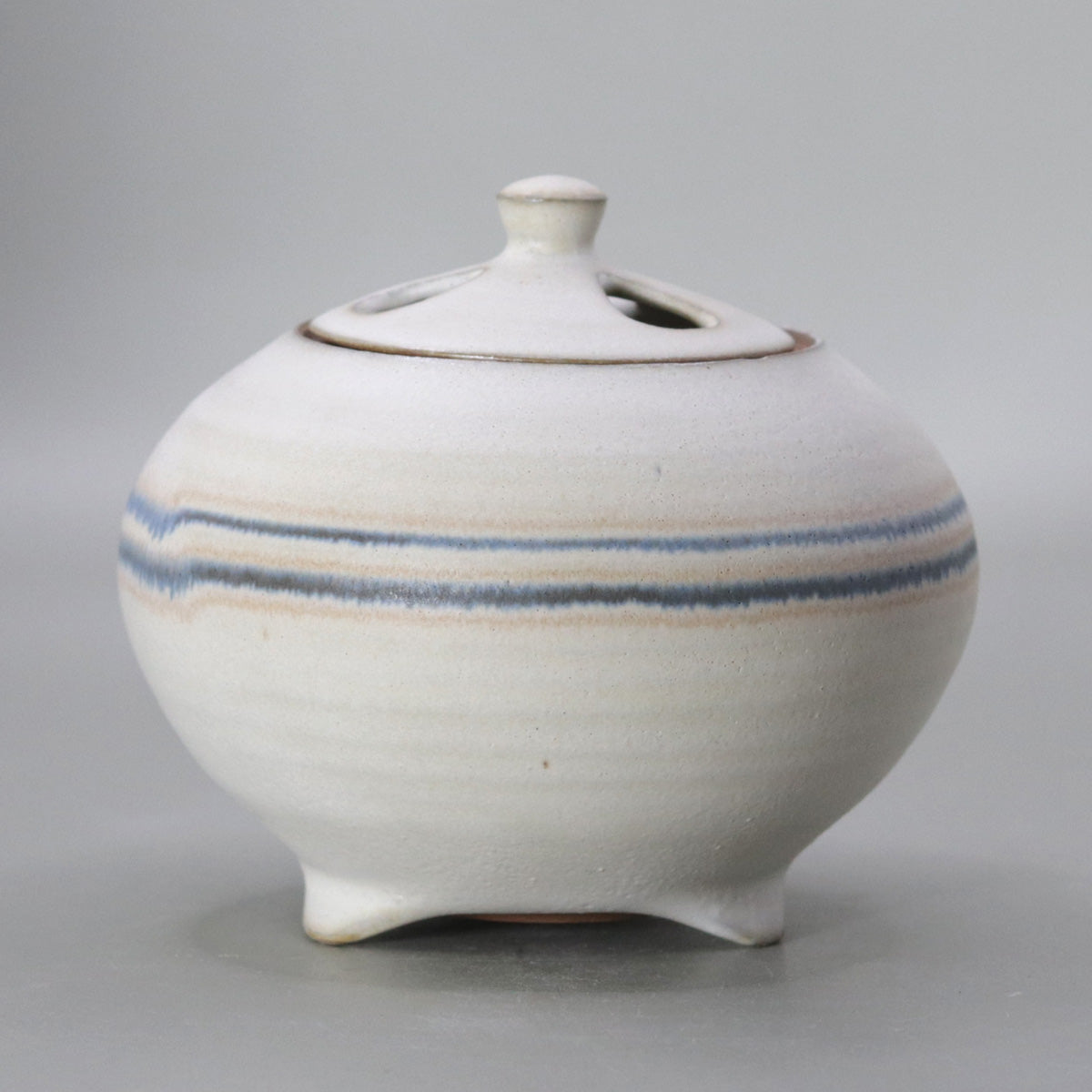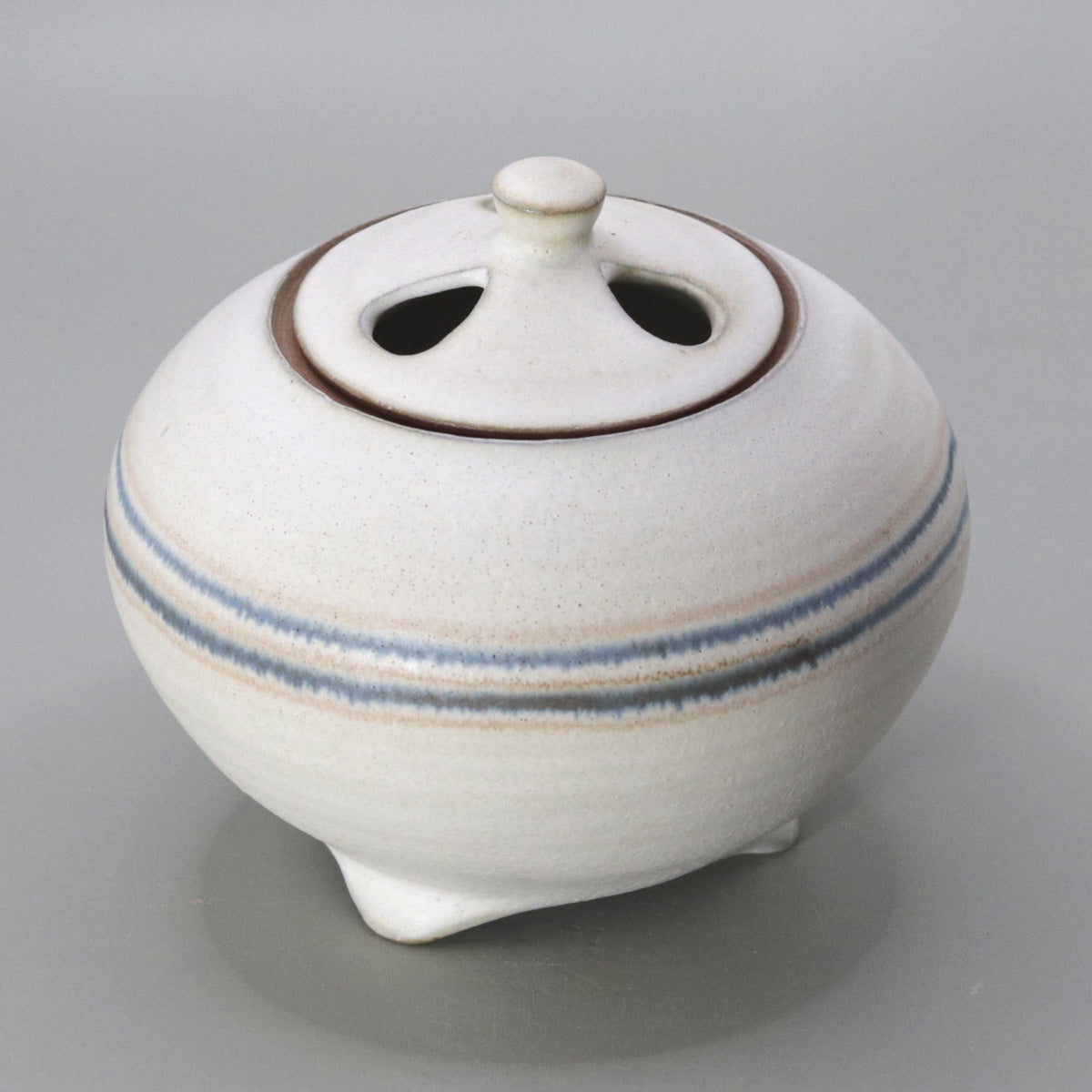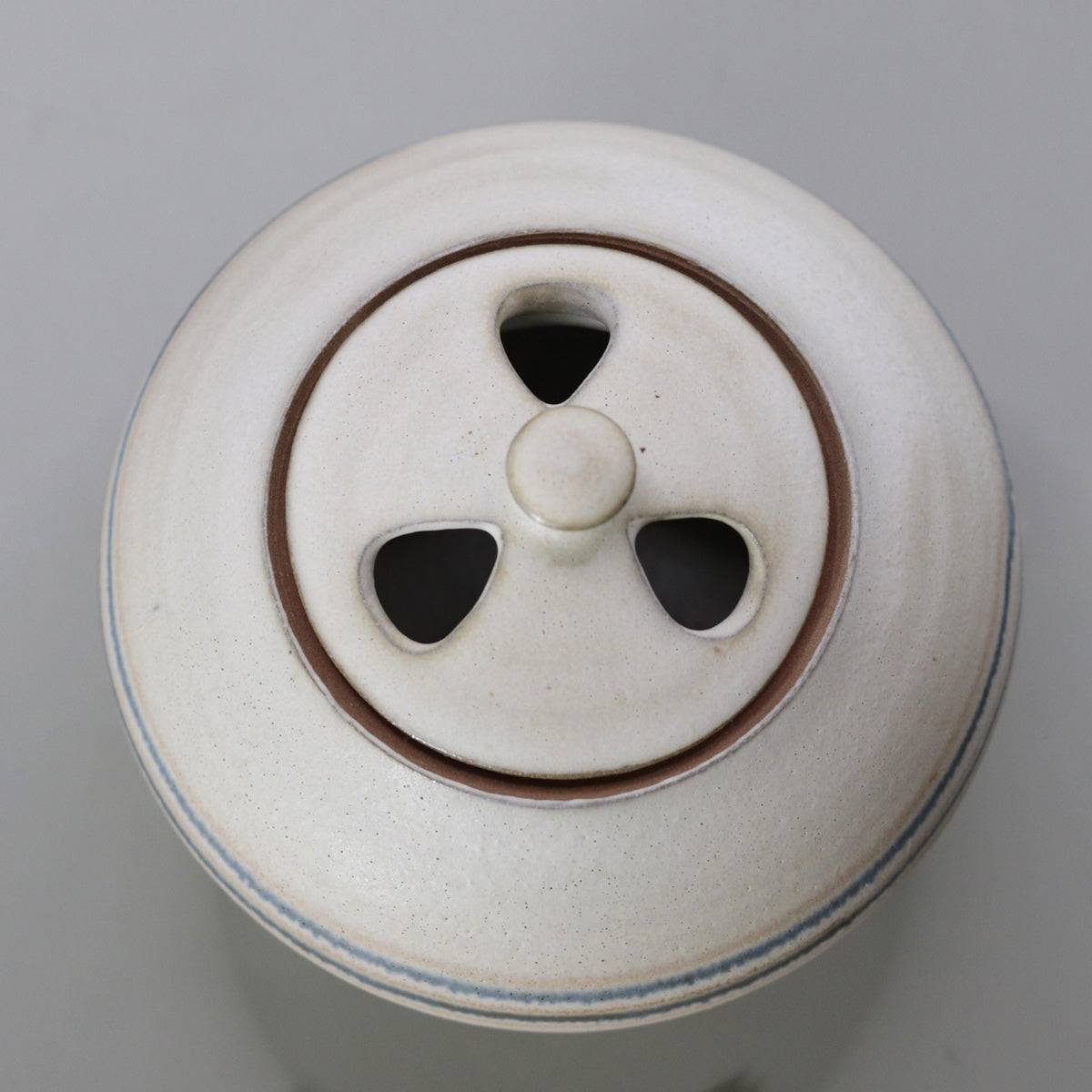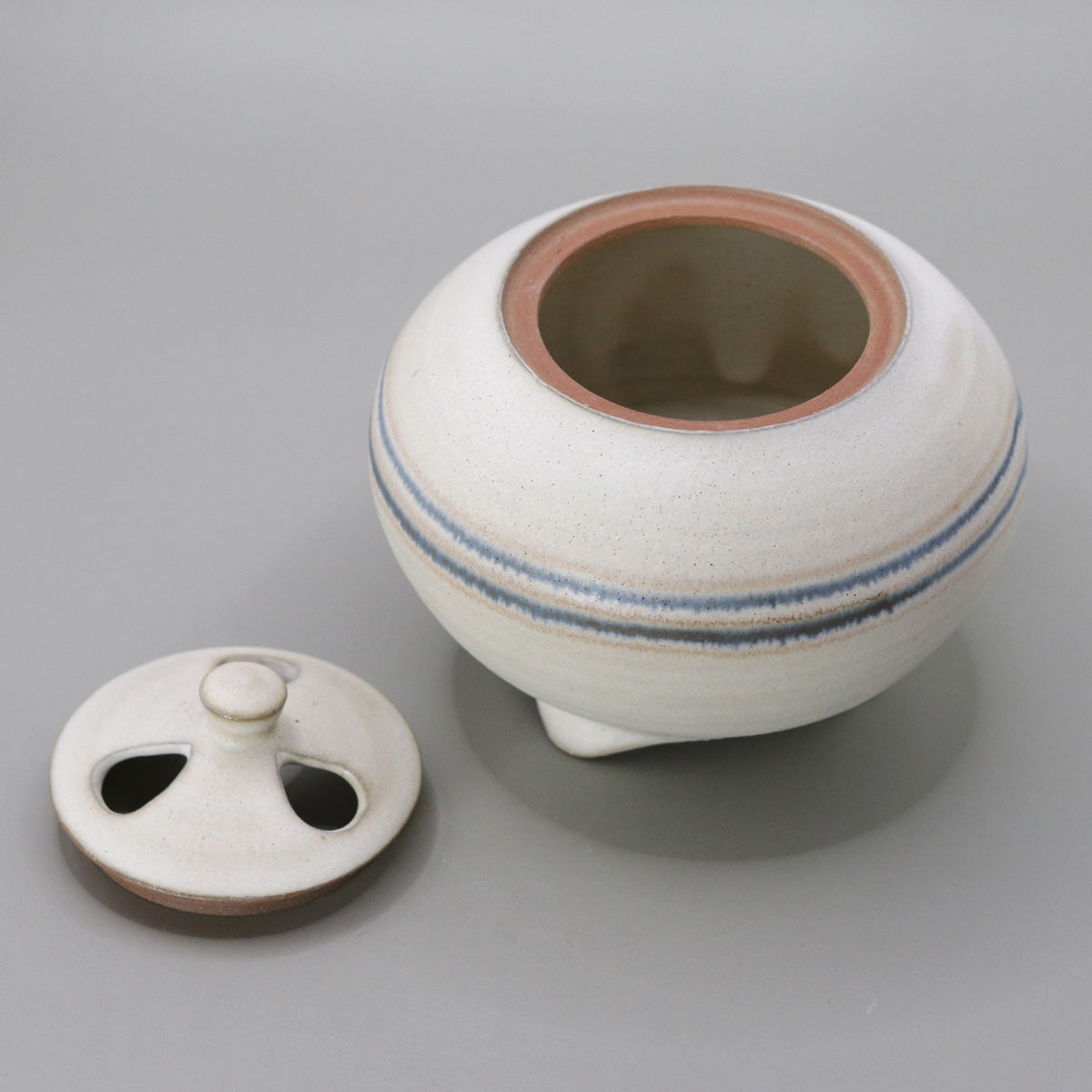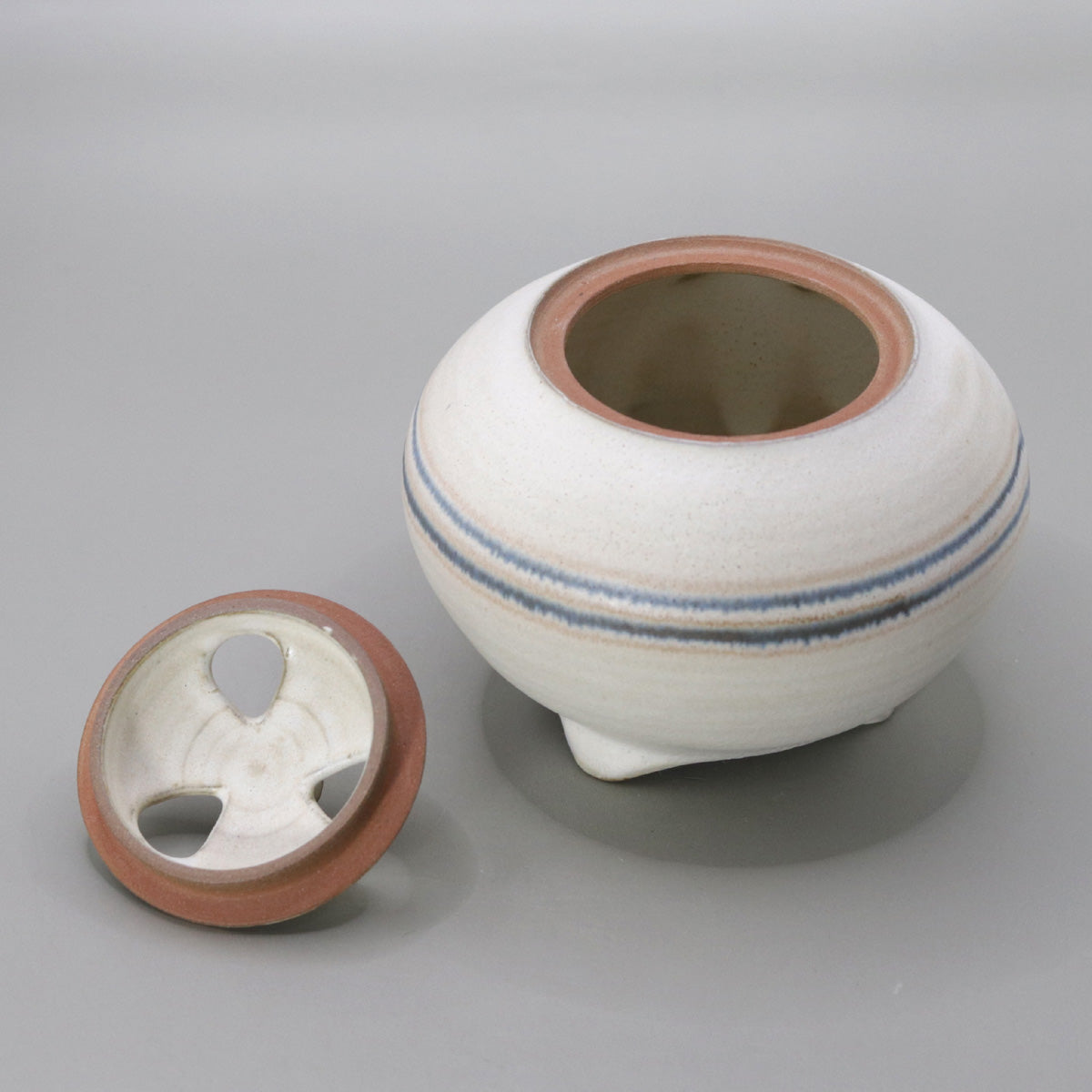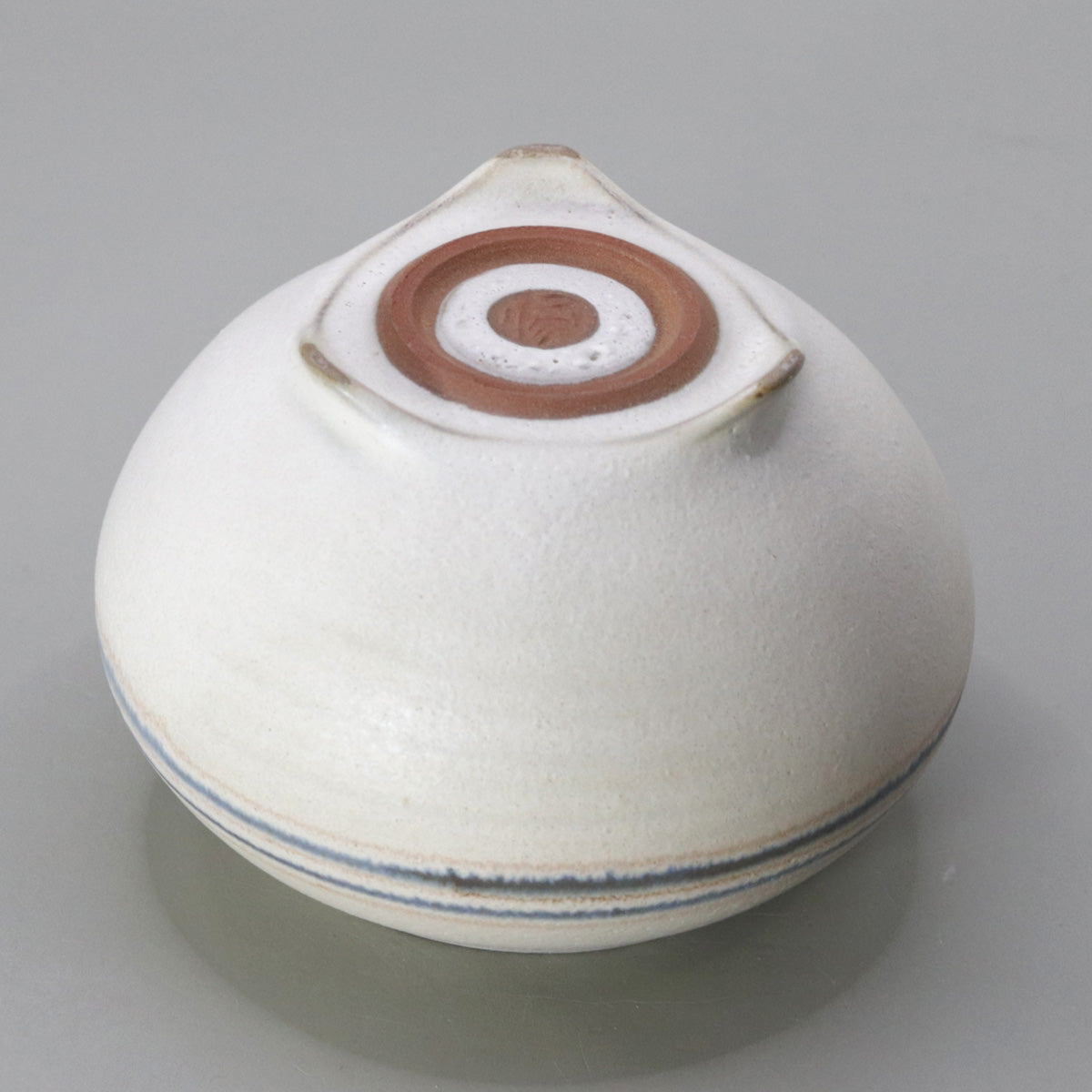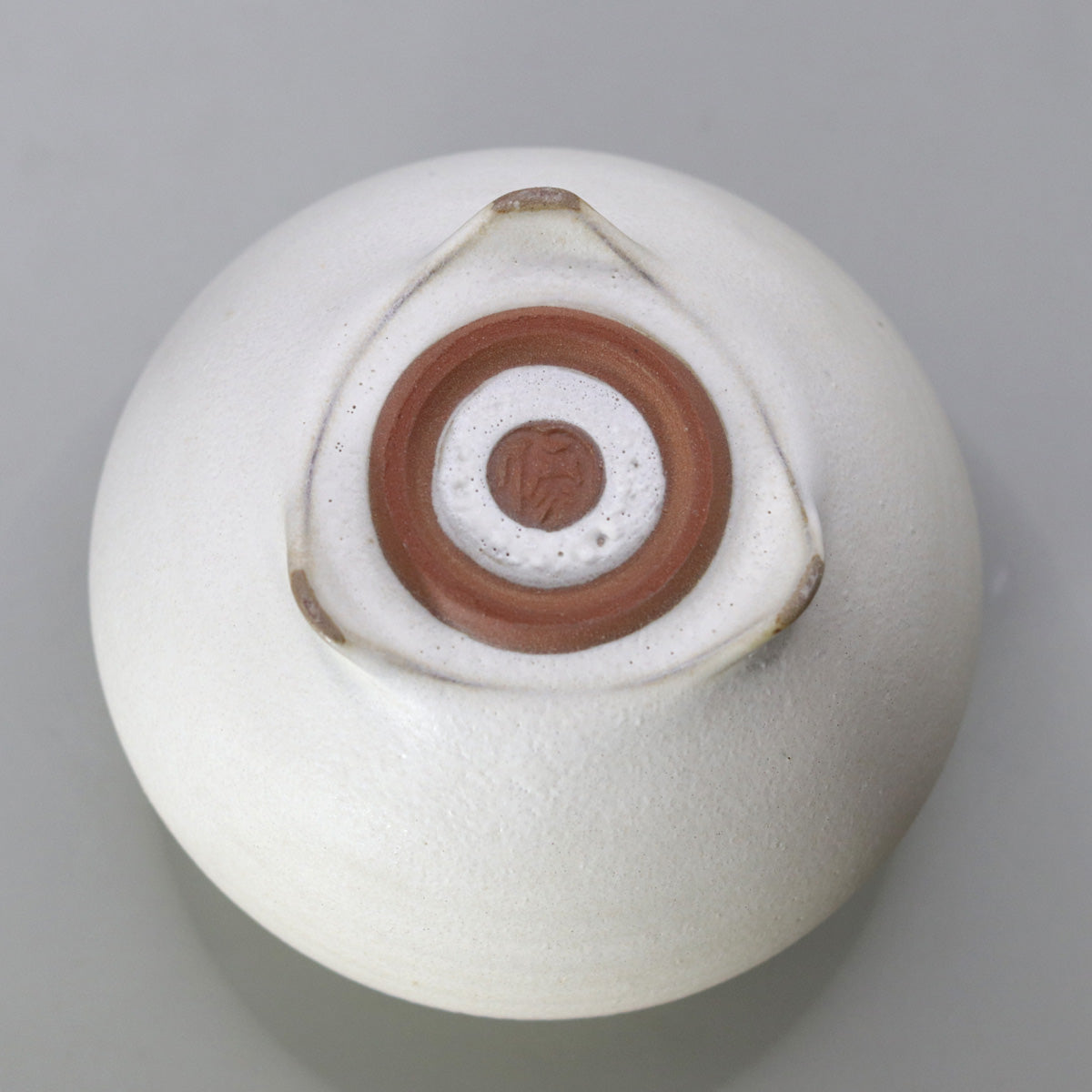White glaze wire pattern incense burner Yu Okada
White glaze wire pattern incense burner Yu Okada
Couldn't load pickup availability
Width: 11.4cm Height: 9.8cm
"White Glazed Incense Burner with Line Pattern" by Masaru Okada - The rhythm of blue embracing the horizon and the tranquility created by the tripod
The two colors of pale blue and hazy brown run horizontally across the gentle texture of the white porcelain, as if abstracting the boundary between the sea and the land. Okada Masaru's White Glazed Line Design Incense Burner combines the two concepts of line = time and incense = intangible , creating a work that brings the "poetry of horizontal lines" to the incense ceremony. Below, we will explain in detail from five perspectives: history, technique, design, spirituality, and use of the incense ceremony.
1. Historical Background - The Intersection of Linear Inscriptions and Incense Burners
The origins of line patterns The horizontal patterns seen on white porcelain striped jars from the Heian period and on the brush marks of the Joseon Dynasty have been passed down as decorations symbolizing the "passage of time" and "layers of water." Okada Masaru follows this tradition, but expresses a more abstract band in pale colors, elevating it to modern minimalism.
Link with incense burner culture <br data-start="405" data-end="408">Incense burners originated as Buddhist ceremonial implements, and in the Muromachi period became a form of entertainment known as monkō (smelting incense). In the late Edo period, a wide variety of glazed and painted incense burners appeared as a preferred design. Incense burners that incorporate linear patterns are rare, and in that respect this piece is unique in its combination of classic form and contemporary design.
2. Design - Horizon and Tripod, Two Rhythms
Horizontal Line Pattern <br data-start="959" data-end="962">The double blue and brown lines symbolize "sea and land" and "day and evening," and the color changes subtly depending on the viewing angle. As the incense smoke rises, this line pattern resonates with the "flickering" of the smoke, stimulating both the sight and the smell at the same time.
Tripod
The smooth teardrop-shaped legs give the vessel a light, airy appearance, reinterpreting the tripod design of ancient bronze vessels in a gentle form.
Lid and Openwork <br data-start="1153" data-end="1156">The semi-spherical lid has two magatama-shaped openwork windows, designed to allow the incense smoke to create gentle swirls. The handle is raised slightly high to allow for smooth opening and closing.
3. Spirituality - Time marked by lines, time melted by incense
The lines represent the "memory of time passing," while the incense brings to the surface the "tangible present moment." This piece embodies the poetics of the time axis, where the past (the lines) and the present (the incense smoke) intersect at a single point and melt into the future (the lingering aftertaste) . The white glaze's blank spaces reflect the user's emotions and the seasonal light, and a new story unfolds each time you look at it.
4. Proposal of combinations for incense and tea ceremonies
Early Spring "Kasumi-ko"
At an early spring gathering, a single white plum blossom is placed on a celadon incense table, and a waka poem about youthful mist is placed on the hanging scroll. The lines running through the pale blue of the celadon evoke the mist that floats in the morning air, and the smoke of the incense rising quietly from the incense burner amplifies the mist. The entire tea ceremony is enveloped in a soft, light haze, allowing guests to sense the arrival of spring both visually and olfactory.
Rainy Season "Rain Sound Tea Ceremony"
In the rainy season, we combine Shino water drop tea bowls with hydrangeas. The blue lines drawn on the unique texture of Shino ware evoke the image of raindrops dripping from the eaves of a hermitage, and combine with the freshness of the hydrangeas to create a moist scene. The incense from the burning wood softens the humidity, bringing a pleasant freshness even in the sound of the rain.
Autumnal Equinox "Sunset Incense"
For the autumn equinox evening, an Oribe tube tea bowl is decorated with Japanese pampas grass and bush clover, with brown lines symbolizing the vestiges of the setting sun. The blue accents create a contrast with the sunset sky, highlighting the gradually deepening twilight. The incense is blended to evoke the scent of autumn grasses, allowing guests to experience the loneliness and richness of the changing seasons at the same time.
Winter Solstice "Snow Viewing Ceremony"
On the night of the winter solstice, a black tea bowl with snow camellia flowers is paired with a white glaze that evokes a snowy landscape. The lines running across the surface of the bowl represent the distant horizon, creating a dignified, "still" composition. A faint fragrance permeates the clear air, creating a snow-viewing tea ceremony with a striking contrast between black and white, stillness and movement.
summary
The White Glazed Incense Burner with Line Design features a horizontal line drawn in a pale-colored belt, a sense of floating and antique style created by the tripod , and an abstract time axis that resonates with the incense smoke. These three elements intersect to create an incense burner that visualizes "movement in silence." It functions as an object that speaks of "time and space" not only in a tea room, but also in a minimalist modern home or gallery space.
— Lines mark time, fragrance melts time.
This message will quietly resonate with the user's sensibilities, weaving a deep, lingering impression.
Share










Multi-Column
-
[I will send it to you quickly and carefully]
We carefully package each product in a way that suits it best.
Also, delivery times vary depending on the piece (vessel, etc.).
Items that already come with a box will be shipped within 1-3 days of the order date.
For items that require a box to be made after your order, it will take approximately 30 days for production to be completed and then shipped.
In either case, once we have confirmed your order, we will contact you by email to inform you of the delivery date.
-
[Requests when purchasing pottery]
Even products that look the same may differ slightly in color, shape, size, etc.
The way the glaze is used, the power of the kiln, the firing method, the season, and the humidity also affect the appearance of the pottery.
Please understand the individuality of each piece of pottery and enjoy the unique warmth of handmade.

